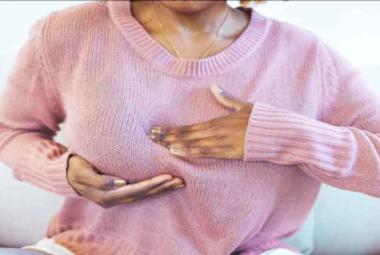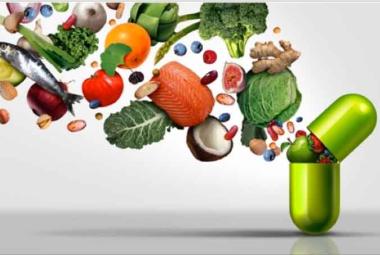By Awa Sowe
Drug abuse or substance abuse refers to the use of certain chemicals for the purpose of creating pleasurable effects on the brain. There are over 190 million drug users around the world and the problem has been increasing at alarming rates, especially among women under the age of 30.
Most people believe that addiction or drug dependency is a male phenomenon and females are less involved in these issues. Addiction in women is becoming a problem and can expose them to malnutrition, high blood pressure, cancer, and some other dangerous diseases like hepatitis or AIDS. Comparing to males, women may be more prone to AIDS or other sexual transmitted diseases. Besides, they are more susceptible to other gynecological diseases and their complications Women face unique issues when it comes to substance use.
According to World Health Organization (WHO) Psychoactive drugs are substances that, when taken in or administered into one’s system, affect mental processes, e.g. perception, consciousness, cognition or mood and emotions. Psychoactive drugs belong to a broader category of psychoactive substances that include also alcohol and nicotine
According to Scientists who study substance use have discovered that women who use drugs can have issues related to hormones, menstrual cycle, fertility, pregnancy, breastfeeding, and menopause. In addition, women themselves describe unique reasons for using drugs, including controlling weight, fighting exhaustion, coping with pain, and attempts to self-treat mental health problems.
Science has also found that:19.5 million women (15.4%) age 18 and above use illicit drugs it is also recognized that Women often use substances directly than men such as using smaller amount of certain drugs for less time before they become addicted
In an interview, Mr Ousman Saidy Bah , Public Relations Officer and Head of Drug Demand Reduction Unit at the Drug Law Enforcement Agency (DLEA) The Gambia, said statistics have shown that women are involved in the cultivation, distribution as well as the abuse of drugs.
He explained that in The Gambia the component of prohibited drugs and the most predominantly used drug is cannabis sativa, which is as well common across Africa. He referenced the West Africa Epidemiology (WEP) as indicating that cannabis remains cheap and easily accessible compared to other drugs.
“There are several different routes of administration for drugs of abuse including orally in the form of a pill, intravenously in the form of an injection, by inhaling the substance in the form of smoke or via snorting the substance so it is absorbed into the blood vessels of the nose,” he posited.
According to the DLEA PRO, there are different types of cannabis such as the cannabis sativa, Cannabis indica and the cannabis ruderalis . There is the component that many people are using to smoke shisha which is very common amongst young people most especially women and most often instead of using the flavor pot they use cannabis to inhale.
“In the controlled drugs the law allows usage goes with rules and regulations and if it is found with a person without prescription by a certified medical practitioner it is deemed that you have it for the purpose of abusing it or for anti legal practices” He noted
Mr Saidy Bah mentioned that women can respond to substances differently. “For example, they may have more drug cravings and may be more likely to relapse after treatment.Sex hormones can make women more sensitive than men to the effects of some drugs. Women who use drugs may also experience more physical effects on their heart and blood vessels”.
He went on: “Brain changes in women who use drugs can be different from those in men. Women may be more likely to go to the emergency room or die from overdose or other effects of certain substances. Women who are victims of domestic violence are at increased risk of substance use”.
Other triggers to women’s substance use or mental health disorders are divorce, loss of child custody, or the death of a partner or child. He said women who use certain substances may be more likely to have panic attacks, anxiety, or depression.
Mr Saidy Bah emphasized the fact that women have been involved in both the abuse and trafficking adding that looking at the dynamics of the trade craft going back to data as far as 2016, the agency registered 219 cases that involve 236 arrest of accused persons , from this 203 are Gambians and 33 non Gambians but if you look at the percentage increase 232 were male and 4 female
In 2016 you 275 registered cases, 310 arrests, 283 are Gambians and 7 non Gambians, 305 male and 5 female so if you look at this there is an increase
From 2019 to 2021 we have seen a percentage increase in the number of women that are been arrested towards 2018, 668 cases, 686 accused persons among these 58 were female and 671 male
Cannabis, marijuana and hashish are the most widely abused drugs in the world. Around 141 million people worldwide consume cannabis. The use of stimulants such as amphetamine and ecstasy is also widespread, with nearly 30 million people abusing these drugs. Cocaine is used by around 13 million people across the globe.
He disclosed that criminals engaging in such activities deceive children and youth folks by telling them that they are children and can therefore not be arrested or prosecuted.
He mentioned that It is not scientifically proven some of these drugs give the urged for intimacy but Women involved in the sex trade often intertwined with drug use .Estimates of female injecting drug users involved in sex work are as high as 20-50 % .commercial sex workers use drugs to be very bold to be able to engage and bear having that time and energy for different types of men
CAUSES DRUG ABUSE IN YOUNG WOMEN
Between the ages of 8 and 22, girls become young women. In these years, they are maturing both physically and mentally. They are forming their identity, a sense-of-self, and self-worth. These adolescent years are the most significant years of development, years critical to a young woman’s health and success later down the road. Unfortunately, adolescence and young adulthood are also times of great susceptibility. Girls are transitioning from middle school to high school, and for the first time, are experiencing many social pressures, physical changes, and stronger desires to fit in.
A recent study by the National Center on Addiction and Substance Abuse revealed that girls and young women commonly initiate substance abuse during these crucial years. Often, their reasons for trying drugs are tied to the stress and pressures experienced in this transitional period. Sometimes, the causes of drug use in young women are rooted much deeper.
The study proved that the reasons for early drug use among females are very pronounced in young womanhood and widely different than the causes of drug abuse among young men. The study also showed that females, on average, actually become dependent faster and suffer the consequences of drugs sooner than males. Even more, young women are at greater risk of drug abuse and addiction.
Why do girls and young women use drugs in adolescence? What are the risk factors for drug use in females? And what steps can we, as parents and educators, take to prevent it? The following seven factors are the leading causes of drug abuse in girls and young women.
Depression and Mental Illnesses
Depression in adolescent girls is not uncommon. Over one-third of high school girls reports regular feelings of sadness or hopelessness. These girls are likelier involve in Substance abuse and mental illnesses such as depression often go hand-in-hand. Young women who are depressed and suicidal often self-medicate with drugs of abuse, increasing their risk of drug addiction.
Stress and Inability to Cope
While males tend to externalize their stress with aggression and delinquency, females have a tendency to internalize their reactions to stress. In most cases of severe stress, young women become depressed and withdrawn. According to the survey, 41 percent of young women report their inability to cope with stress as the main reason for using drugs.
Low Self-Esteem
Low self-confidence frequently accompanies the teenage years. This is especially true among girls. Body-image and social image are often top priorities for high school girls who want to fit in. They associate weight loss with beauty and popularity. They associate drinking, drug use, and smoking with being trendy, and cool. They believe that drugs are the answer to their problems.
Most women believe they are under even more pressure to smoke, drink, and try drugs. The more friends a girl has who smoke, drink, or use drugs; the likelier she is to do so herself.
Young women who abuse drugs do so for significantly different reasons than men. While men use drugs for sensation or social purposes, females are likelier to use drugs to cope with problems, relieve negative feelings, reduce tension, boost confidence, enhance sex and lose weight.
According to Mrs Sainabou B. Cham, Mid Wife and Program Officer at the Health Promotion and Education Unit, Ministry of Health, women can become addicted quickly to certain drugs, such as crack cocaine. Therefore, by the time they seek help, their addiction may be difficult to treat.
She said women who use drugs often suffer from other serious health problems, sexually transmitted diseases, and mental health problems, such as depression.
“Addiction in women can expose them to malnutrition, high blood pressure, cancer, and some other dangerous diseases like hepatitis or AIDS. Comparing to males, women may be more prone to AIDS or other sexual transmitted diseases”.
On pregnant and parenting women, she said cannabis, ecstasy, cocaine and heroin, can have a potentially serious effect on the unborn baby and the drug can act directly on the fetus, causing damage, abnormal development , leading to birth defects or death.
“The drug can alter the function of the placenta, usually by causing blood vessels to narrow and thus reducing the supply of oxygen and nutrients to the fetus from the mother. Sometimes the result is a baby that is underweight and underdeveloped. I can also cause abortions or low birth weights”.
Mr Omar Bojang is in charge of Tanka Tanka. In this interview he said at Tanka Tanka some of the women’s psychological situation is connected to drug abuse. He opined that drug abuse in women should be addressed simultaneously using a multidisciplinary approach, with collaborating professionals from the drug treatment and the mental health sector working together towards common goals.







